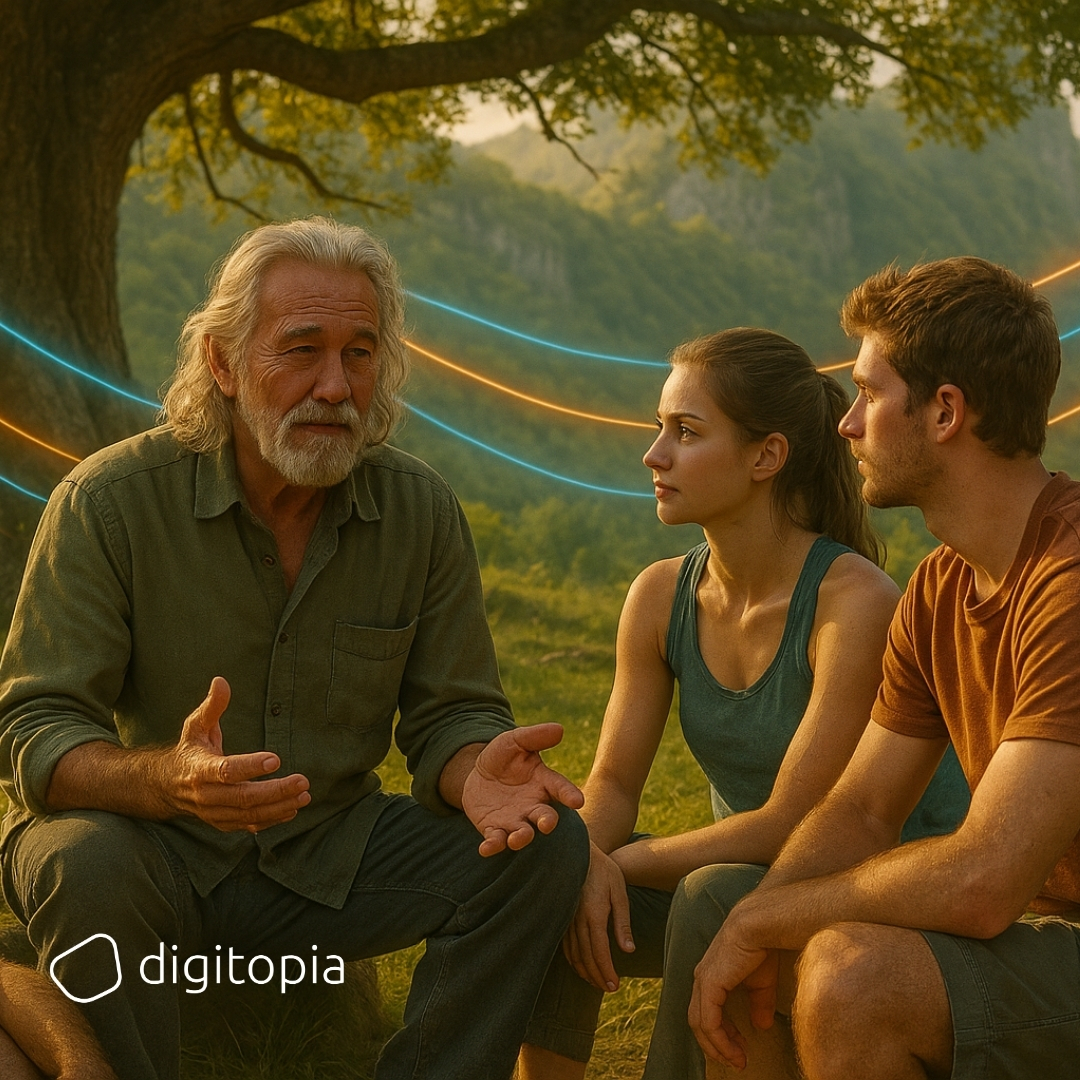
“Now what do we do?” “Great, we’re lost!” “How do we get out of here?” “Why did we even come this way?”
The group’s morale was crumbling. The weekend had started off so promising—a chance for four friends to explore the beauty of nature. They had parked at the entrance of the valley, dismissing offers from local guides, confident in their own map, compass, and experience.
The first day was wonderful. The group followed their planned route, stuck to the paths, and enjoyed a peaceful night camping. But by the next afternoon, they were faced with an unexpected challenge: the sound of rushing water not marked on their map.
“Let’s follow that sound, see where it leads,” Ali suggested. “No, we shouldn’t stray from our path,” cautioned Kemal. But Aylin, eager for adventure, convinced them to explore. They soon found a breathtaking waterfall, hidden deep within the dense greenery, its power and beauty mesmerizing.
Time slipped away as they marveled at the scene. When they finally decided to move on, they realized they’d lost their bearings. Ali, the most experienced, managed to get them back on what they thought was the right path. But the detour had delayed them, forcing them to camp early.
The next morning, they set off again, only to find themselves surrounded by a sea of butterflies. Drawn by the sight, they wandered through a vast flower field, losing their original trail. But the path they found seemed familiar enough, so they continued without checking their map.
Later, they stumbled upon a cave at the base of a small hill. Without hesitation, they ventured inside. The cave was stunning, filled with stalactites, stalagmites, and hidden streams. But as they went deeper, it grew colder and darker. Panic set in when they realized they had no idea how to get back.
Cansu’s earlier concerns about finding their way out echoed in their minds. The group turned to Ali, who assured them they could find their way back the way they came. But their tools—compass and map—were now useless in the disorienting darkness. Anxiety grew as they struggled to find any exit.
After what felt like hours, Kemal spotted a faint light. Following it, they squeezed through a narrow opening and emerged into a part of the valley they didn’t recognize. Exhausted and shaken, they sat under a tree to rest, their confidence shattered.
As they discussed their situation, an old man with a calm, wise demeanor approached. The group was instantly silenced, captivated by his presence. He was the “Sage,” a local who knew the valley like the back of his hand.
“Looks like you’ve lost your way,” the Sage said kindly. “But don’t worry, this valley is full of surprises. I can help you find your path again.”
The group, relieved to have found a guide, listened intently as the Sage asked them about their journey so far. With each answer, he pieced together their route, identifying where they had strayed. He then presented them with two options: continue exploring the valley’s wonders, or take a more direct path to their destination by the river, where they had originally planned to camp.
The friends were divided—some wanted more adventure, while others longed for a quiet, relaxing time by the river. The Sage offered his advice: “You came here to experience something new, but also to rest. Balance the two. See what you can, but don’t forget to recharge.”
The group, now reassured and clear on their priorities, thanked the Sage. With his guidance, they could continue their journey, wiser and more attuned to the valley’s challenges and their own needs.
Lessons from the Valley
The Sage was not just a guide but a master of understanding human behavior and the complexities of decision-making in uncertain environments. He demonstrated how a calm mind and structured thinking could turn confusion into clarity. The group learned the importance of balancing exploration with caution, and how critical it is to understand both the environment and oneself when navigating unknown territories.
For businesses, the lesson is similar. In the world of AI, understanding the complexities of human behavior is crucial. AI systems should be designed to not only process data but to anticipate and respond to the nuances of human decision-making. By incorporating behavioral insights into AI models, companies can better predict outcomes and optimize their strategies, ensuring that their AI systems are not just efficient but also aligned with human values and needs.
A Journey Toward Excellence
The group’s adventure in the Valley of Wisdom highlights a fundamental truth: what gets measured gets done. By carefully observing and understanding their environment, they were able to make informed decisions that led them to safety and success. This is a journey toward excellence, where continuous learning and adaptation are key.
In business, the same principle applies. The AI Maturity Index (AIMI) is a powerful framework that helps organizations measure their progress, identify gaps, and continuously improve. Just as the Sage guided the group through the valley, AIMI guides companies through the complexities of AI implementation, ensuring that each step is informed, measured, and optimized for success. This journey, like the one through the valley, is about more than reaching a destination—it’s about becoming wiser, more resilient, and ultimately, more excellent.


